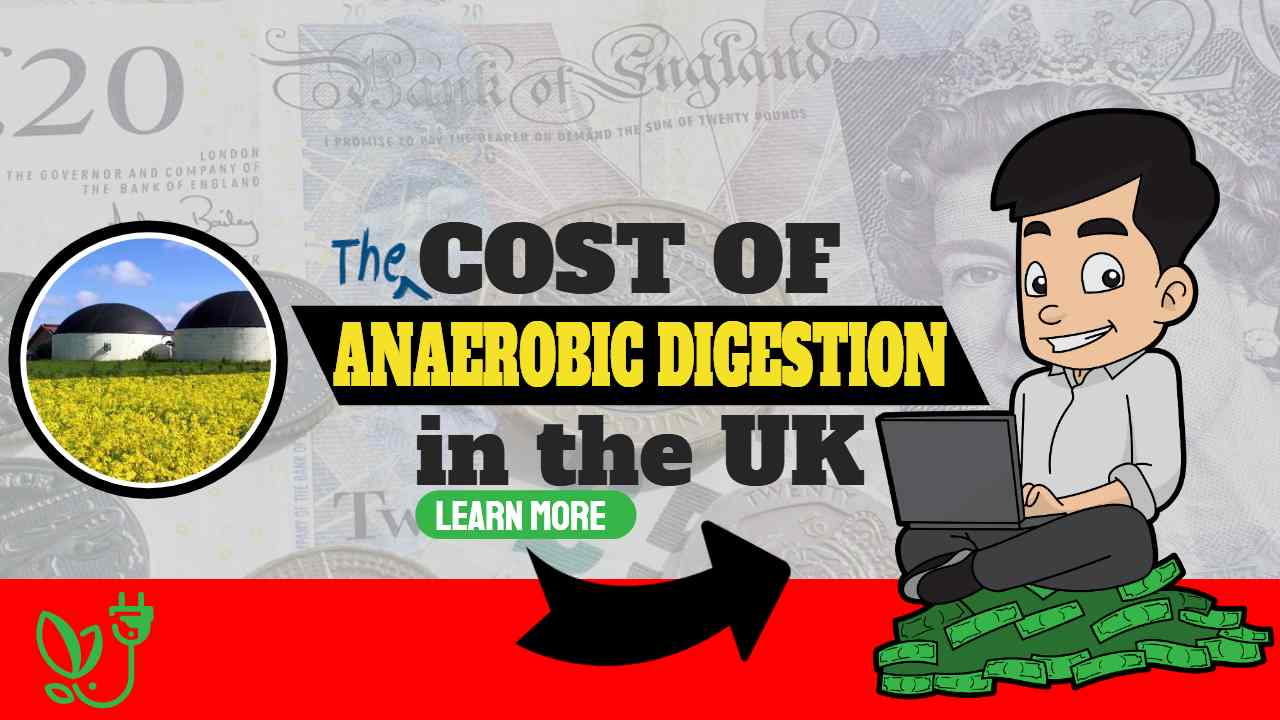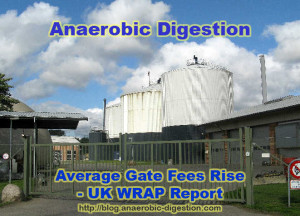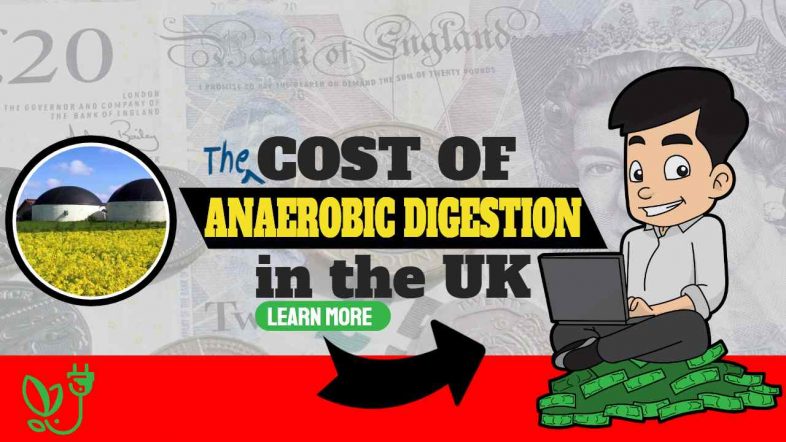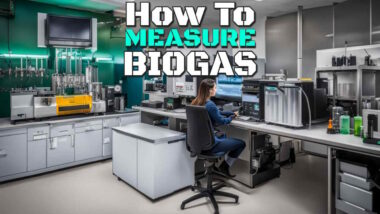The cost of anaerobic digestion in the UK is reported for those seeking to operate their own biogas plants as below:
Cost of Anaerobic Digestion
A UK farm-based digester employing manure from 250 cows and 150 hectares of maize, with a capacity of roughly 275kWe, has a start-up cost of around £1.5 million to build. However, a conventional 2MW digester employing 40,000t of food waste may cost three to five times that (£4.5 to £7.5 million at approximate August 2021 prices.)
This has been estimated for the United States as approximately $500,000 for a simple membrane-covered lagoon-type digester, but this could rise to $10,000,000 depending upon the size of the biogas facility and the technology used.
The typical on-farm US anaerobic digestion unit has been suggested to cost approximately $1.5 million to construct and commission.
UK WRAP Report Update on AD Gate Fees for 2023!
Some Local Authorities are being paid good money for their food waste while others are still being charged for it!
The latest UK WRAP report reveals some intriguing shifts in Anaerobic Digestion (AD) gate fees for food waste:
The median UK gate fee for food waste sent to AD dropped to £13/tonne in 2022, a decrease from £30/tonne in 2021/22.
But it gets more intriguing than that, as follows:
- Astonishingly, some local authorities (LAs) are paying as much as £26/tonne to get rid of food waste.
- Of the LAs that commenced new AD contracts for food waste in April 2022, the median gate fee was a long way lower at -£15/tonne. Yes, a negative gate fee means that the local authority or organic waste producer gets paid to drop off their food waste.
- Notably, this is not an isolated occurrence. Contracting authorities, representing 9 LAs, reported negative gate fees. This is not limited to a single authority but spans multiple AD contracts.
While these figures are thought-provoking, LAs are advised to proceed with caution. The report suggests that these values may not be indicative of future costs.
🔗 Full details in the report: WRAP 2022-23 Gate Fees Report
Latest 2022 Annual WRAP Gate Fees Report
Another indicator of the rising demand for food waste and the highly geographically variable degree of supply and demand in the market for anaerobic digestion for those who don't have their own digester and wish to dispose of waste to an Anaerobic Digestion facility is the Annual WRAP Gate Fees Report.
The annual UK WRAP gate fees report does at least provide an indication of trends in the fees food waste biogas plant operators command when accepting organic waste from MBT (Municipal Biological Treatment) plants and Household Food Waste from MRFs and source segregated kerbside collections.
The annual WRAP report on gate fees (Cost of Anaerobic Digestion) attempts to improve waste management market transparency and efficiency. It is used by both local governments and the waste industry to gain a better understanding of the complicated market. It focuses on the median and range of costs charged at facilities across the United Kingdom.
The 2020 WRAP Gate Fees report is available at the WRAP website here.

This article was updated in October 2023.
The original, but still relevant, article (as uploaded in Feb 2015) follows below:
It is difficult to obtain UK anaerobic digestion plant operational costs to assess the Cost of Anaerobic Digestion, from any source, so the annual WRAP gate fees report, now published, is eagerly awaited each year by many people in the UK Biogas Industry.

This rests currently (February 2015) at only half what it was before the summer of 2014, and many are concerned about how that might reduce the profitability of AD facilities.
The report: “Gate Fees: Comparing the Costs of Alternative Waste Treatment Options” (visit www.wrap.org.uk/gatefees to view it) is based upon data for 2013/14, so there is no possibility that any effects of the reduction in oil prices, will show up in this data.
However, that does not mean that the Gate Fee (Cost of Anaerobic Digestion) report is not worth studying, and we believe that there is plenty of good news within it.
Most UK anaerobic digestion facilities are, in the main, driven by their waste management function, and in principle, the electricity tariffs are set many years in advance given that they are set based on government incentives, and not the oil price.
There may be a slowdown in interest in new AD plant projects while the oil price remains so low, but existing biogas plant operators should not be suffering economically. In fact, gate fees have been rising, with many more local authorities now involved in disposing of wastes in anaerobic digestion plants than in the previous year.
So, given our title, what can be concluded about overall Anaerobic Digestion costs over the period 2013/14? Only very general statements can be made, but in so far as wages and electricity tariffs have remained largely static AD costs will not have changed significantly, and if anything based upon this assumption this report suggests a rise in biogas profitability industry-wide, as the following extract suggests:
AD’s Influence Continues to Grow and MRF Gate Fees Rise
Material Recovery Facilities (MRF) gate fees are increasing, while AD's impact in the organic sector is growing announced as WRAP releases its 2014 annual Gate Fees Report.
According to WRAP, gate fees at MRFs have grown marginally over the year 2013/14, while the number of local governments reporting the use of anaerobic digestion (AD) facilities has nearly doubled.
According to WRAP, the entire UK median MRF gate fee paid by local authorities increased modestly to £10 per tonne this year. The median gate charge for the 14 MRF contracts signed in 2013 and 2014 was £0 per tonne, up from minus £10 (-£10*) for the 11 new MRF contracts signed in 2011 and 2012. ..
Based on survey results, WRAP concludes that local government adoption of AD technology has increased in the last year: nearly twice as many local governments reported utilising AD facilities in the current study as in the previous survey. …Also, according to the report, the median gate price paid for treating food waste at AD facilities is £40 per tonne, although it varies depending on several parameters, ranging from £19 to £63.
…Other changes include a higher number of local governments providing gate fee data for Mechanical Biological Treatment (MBT) or Mechanical Heat Treatment (MHT), which could suggest increased acceptance of MBT/MHT technologies or more facilities coming online.
The average MBT/MHT gate price is currently £84 per tonne, up from £76 in the last survey…
* A negative gate fee is when an MRF pays the local government (council) revenue for the recovered materials that are sent to the MRF for sorting. Source: http://www.wrap.org.uk/node/24103
Cost of Anaerobic Digestion and Gate Fees – A Conclusion
The AD market which drives Gate Fees for AD treatment of the organic MRF output, and general food waste is very complex.
Biogas plants vary enormously in the technology used and in their cost structures. There will be some biogas plant businesses that will have benefited more than others from the war in Ukraine and the ensuing increase in the price paid for their energy output over the last 18 months.
[This article was originally published in February 2015. Updated in August 2021. Last update October 2023.]





Please recommend a website where I can find the lowest AD plant gate fees in my area? Where can I look?
This site is good. Carry on. You are newcomers. We have been doing this in Austria since 2004. The biogas plant is operated as a co-digestion plant and utilizes organic waste material to a high extent for the production of a high-quality biogas. The plant has been commissioned in the year 2004.
Cost is very high in UK. In Vietnam most common use biogas is made below the ground. Is cheaper.
The cows can be removed from the farm and the grass fed to an AD system. From there the biogas can be used to generate heating gas. Restrict the use of fracking and the importation of natural gas.